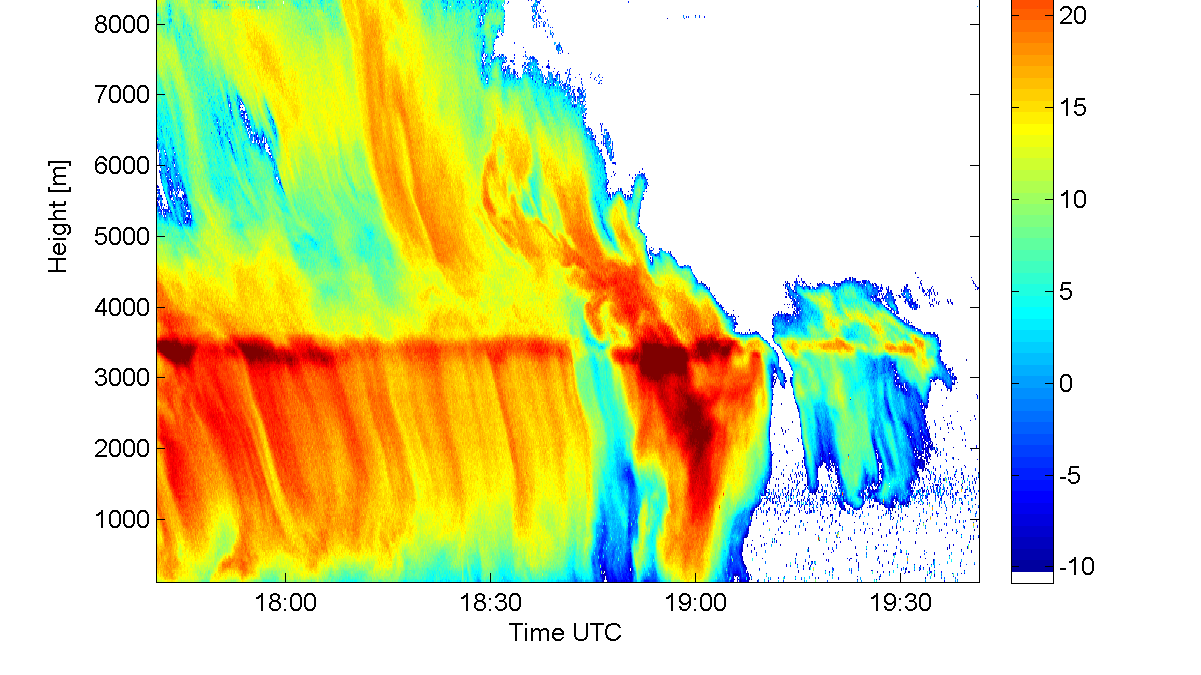Precipitation
In our group we measure, model and predict precipitation in all its forms and shapes. For instance, we develop new methodologies for retrieving microphysical and dynamical properties of precipitation, such as particle size distributions, fall speeds, and wind and turbulence. We also perform fundamental research into weather radar technology itself, such as retrieval techniques, calibration, clutter removal and signal processing.
We develop and operate several radars in the Netherlands that measure precipitation, including the Doppler polarimetric precipitation radars (3 to 9 cm-wavelength) such as TARA and IDRA, which can observe the spatial and temporal structure and dynamics of precipitation (see Figure), and our own in-situ weather station network at TU Delft and in Rotterdam, which we use to study flooding and washout of air pollutants by rain.

A "quicklook" of radar reflectivity (a measure of the size and concentration of scattering particles, in this case rain drops) made by the TARA radar over Cabauw. Here we see a deep stratiform precipitation event, whereby ice melts to rain across 3.5 km, increasing reflectivities there.
Using these data, we develop mathematical models for merging multi-sensory rainfall estimates from radars, gauges and citizen weather stations, create climatological characterizations of the size, duration and intensity of storm systems to temperature and large-scale atmospheric forcing. and look at trends and changes in rainfall patterns due to climate change. We also build stochastic weather generators and explore the theoretical limits of predictability of rainfall using machine learning techniques. Our research activities span a vast number of fields, including applications in hydrology, water management, agriculture, climate adaptation, transport and energy.